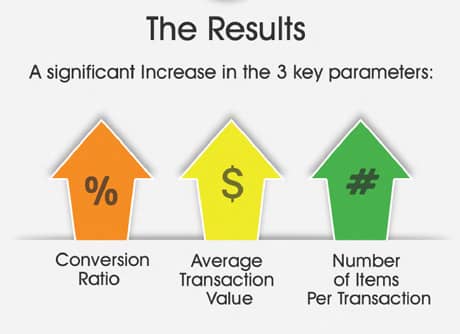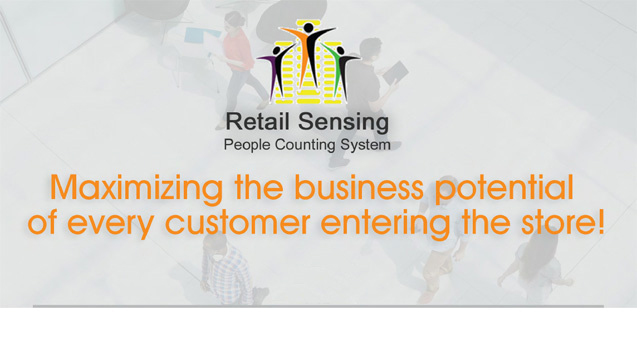Smart retail analytics deliver business success
How to use retail analytics to maximise the business value of every person entering the store.
Why Smart Retail Analytics?
Many retailers collect data on what is happening in their stores but are not using that data to maximise the volume of sales.
Someone who leaves a store without buying anything is a loss of the tremendous budgets which were invested in marketing activities, store design, rent and salaries.
An entry which did not end with a transaction is a lost customer.
What can be done to increase the business potential of each person entering? How to make efficient use of the huge amount of data and vast know-how?
Smart Retail Sensing: the Aims
- Raising conversion ratio
- Raising the average transaction value
- Raising the average number of items per transaction
- Continuing the improvement over time
How to Achieve these Retail Excellence Aims
Combine technology and expertise in retail management with the five stages model.

- Data Collection
- Analysis
- Planning retail adjustments
- Implementation
- Back to Data Collection to monitor, measure and make more improvements to the key performance indicators

On which Retail Components does the Model Focus?
- Store orientation and product range
- Service
- The Sales Process
Time Table
collection
Impact of Smart Retail Analytics
Long Term
- Constant improvement in the main parameters
- Preparations according to predetermined patterns
- Marking “bleeding profits” shops due to poor preparation
Short Term
- A significant increase in the three main parameters: Conversion Ratio, Average Transaction Value and Number of Items per Transaction
- Setting new achievable standards
- Dramatic amplification in staff awareness and service parameters
Find out more
Get in touch to see if we can help you acquire retail intelligence. You can also download the Smart Retail Analytics infographic.


Great share!
Great to know the benefits of retail analytics and its effect on ROI!